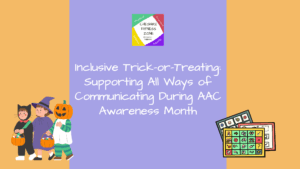Stuttering is a common speech disorder that affects as many as three million Americans. Stuttering usually develops in early childhood, between the ages of 2 and 6.
Sometimes stuttering issues are temporary, and sometimes they last a lifetime. For people of all ages, stuttering can cause frustration, anxiety, and social difficulties—the latter due as much to social stigma as anything inherent to the condition.
If you have a child in Connecticut who is struggling with a stuttering problem, or who you think may be developing one, you can get help. Speech language pathologists (SLPs) can diagnose stuttering, and stuttering therapy and other speech therapies can be employed to improve speech fluency and develop a positive attitude toward verbal communication.
What Is Stuttering?
Stuttering is characterized by involuntary disruptions in normal speech, most often repetitions of certain syllables, elongations of syllables, pauses, blocks, and more. Disruptions in speech are known as “disfluencies.” Symptoms can be mild or severe, and usually present themselves in early childhood.
The causes of stuttering are not known, although a number of plausible factors have been suggested: genetics, congenital factors, developmental issues, and others.
How Is Stuttering Diagnosed?
Typically, stuttering is diagnosed by a licensed speech-language pathologist (SLP). Considerations for a diagnosis will include the child’s history with speech and communication, family history of stuttering (if any), a careful observation and analysis of their stuttering, and other factors.
Once the SLP has been familiarized with the case, it can be decided whether or not to proceed with therapy. (The Stuttering Foundation writes that as many as 70% of children who stutter will outgrow the behavior on their own, so therapy may not be needed in every single case.)
How Do I Know If My Child Needs Therapy?
Since so many children who stutter grow out of it without the need for therapy, it can be difficult for parents to decide when a professional diagnosis is required. Generally, experts recommend seeking professional help if a child’s stuttering has lasted between 6 and 12 months.
How is Stuttering Treated?
There is no cure for stuttering, but early intervention can help children overcome or manage their symptoms.
Much treatment occurs at home, by providing parents and family members with strategies to nurture their own children’s ability to speak. This can include active listening strategies, relaxed speaking, and more—in these cases SLPs will teach as much to family as to the actual patient.
Other stuttering therapy tactics include breathing exercises, anxiety management, and the teaching of other skills that can help stutters speak in a more regulated manner.
In every case, a custom, individualized approach is required to address each child’s particular needs.
Stuttering Therapy in Connecticut
If you’re in need of a speech-language pathologist or stuttering therapy services in Connecticut, contact Cheshire Fitness Zone today. Cheshire Fitness Zone’s staff of speech-language pathologists will work to develop individualized treatment programs designed to facilitate fluent speech in everyday situations.
With convenient locations in Cheshire and Meriden, Cheshire Fitness Zone is one of the state’s premier resources for stuttering therapy.
Call (203) 250-9663 or fill out the form below to learn more.
Contact Us
"*" indicates required fields



